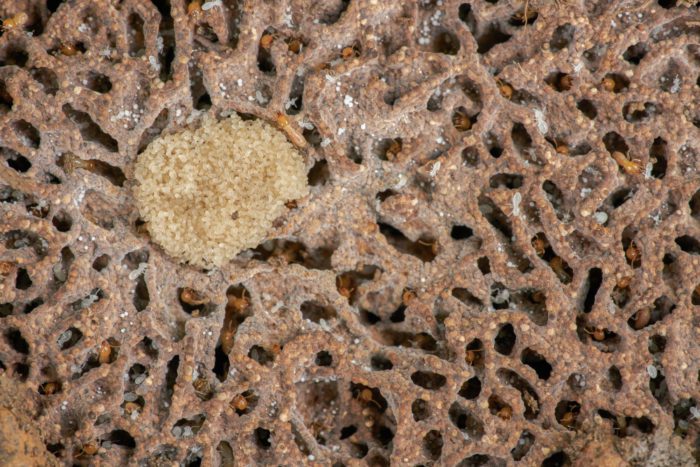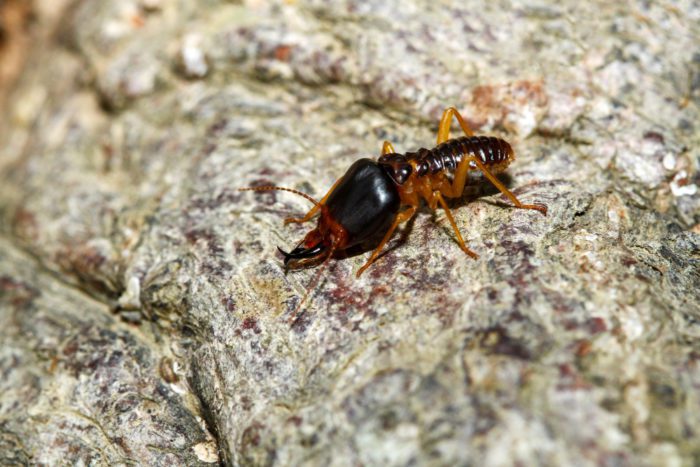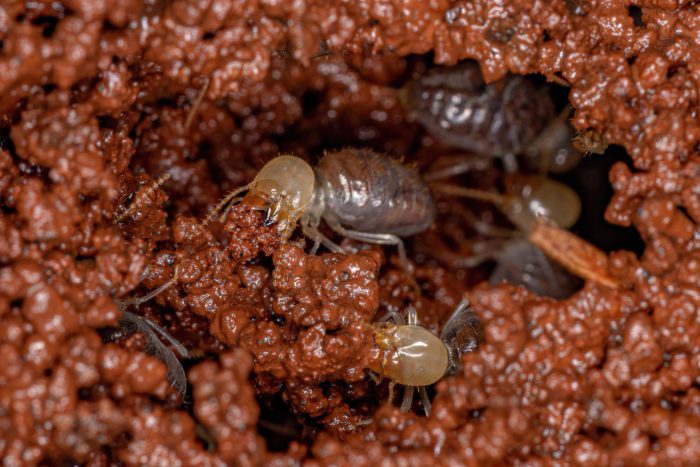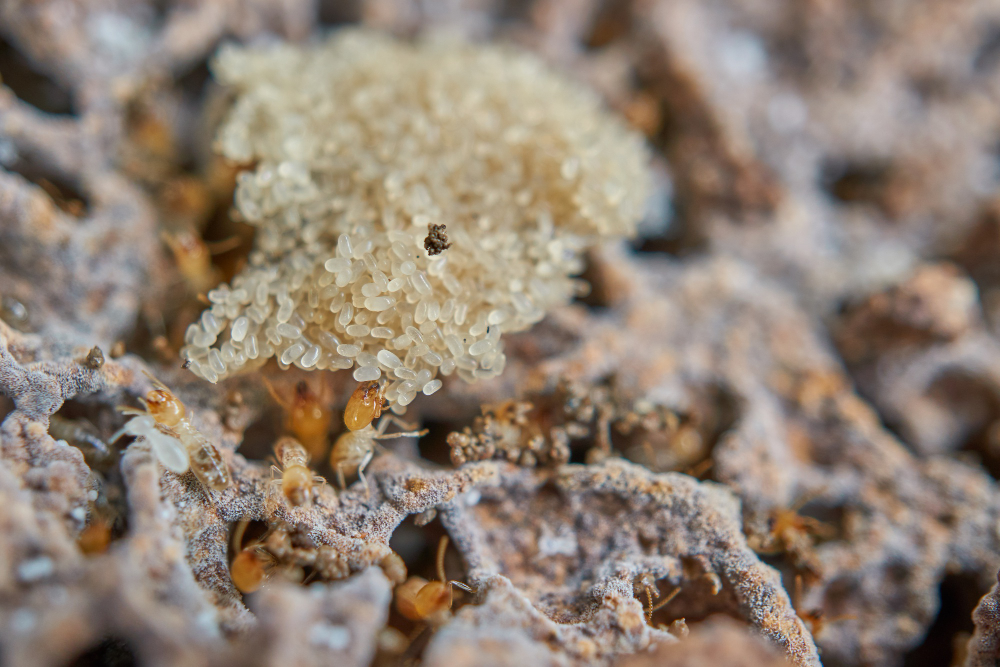Infraorder Isoptera is the category under which termites fall. They are cellulose-eating insects, showcasing systems similar to that of ants and bees.
Isoptera in Greek means, two-pairs of straight wings. Because of this feature, they are often confused with flying ants. Termites are mostly found in tropical rainforests and have more than 2500 species.
To have a better understanding, let us discuss the life cycle of termites. This article will cover all the 3 stages of their life cycle- Egg, Nymph and Adult.
Important Note: If you're tired of pests and want a reliable solution, then you should definitely consider seeking help from a professional pest control company. DIY solutions can be effective, but if you're dealing with a significant pest infestation, you don't want to rely solely on DIY methods. Pest control companies typically don't charge huge fees. You can fill out this form to receive free quotes from the top local pest control companies, and compare the quotes and see for yourself. Then, finally, your pest problems will be eliminated for good.
Egg Stage

After the fertilization process, the eggs laid by female termites are held together by a jelly-like liquid. Female termites can lay around 30000 eggs daily.
These eggs are small in size and white in color and can be seen through the naked eye. The eggs are then incubated for several weeks, before hatching into larvae.
Nymph Stage
These larvae are tiny exoskeletons and their color appears to be pale or white. They are called nymphs or immatures. Nymphs emerge with antennae and six functional legs.
Larvae are called nymphs after their first molt. During molting, the nymph termite removes their outer skin as they become very tight. The caste in which a nymph is going to evolve is decided by hormonal indicators.
During this whole process, the nymph develops by molting, going through instar (developmental) stages as they mature. Later, the nymph termites get bigger and more developed.
Termites from here on undergo several instars before reaching sexual maturity. The number of instar stages they have to undergo depends upon the species of termites.
Adult stage
After reaching the adult stage, termites form large colonies which include workers, reproductives, and soldier termites.
Worker Termites
These are considered to be the largest termite colony as most of the young termite insects develop into worker termites. Their color ranges from yellowish-white to creamy white.
These do not have eyes, wings and when it comes to size, they are larger than nymphs. In a few species, workers are the only termites who can feed independently.
Soldier Termites
These are the second largest termite colony coming after workers. As their name suggests, they mostly work towards guarding the nest and are even able to defend themselves.
They have specially designed mouthparts so that they can defend themselves and their colony. Soldier termites are sterile and blind. When encountered with an enemy, they release a toxic substance through their nozzle.
They are considered to be the most active kind of termite and when it comes to appearance, they have the most distinctive features.
Reproductive Alate

King and queen are the only ones among termite colonies, who can reproduce. These are also known as swarmers. They appear to be golden to dark brown. Some species are found in reddish-brown color too. In terms of size, alates are bigger than soldiers and workers.
- King Termite – After finishing his mating, a male alate is called a king termite. It does not change his size after becoming the king of the colony.
- Queen Termite – The former reproductive alates are known as queen termites. With time they become much larger than the king termites. They can lay a large number of eggs because of the continuous development of their ovaries while growing older.
Life Expectancy
The life expectancy of a termite depends upon the colony they belong to.
Worker and soldier termites can survive up to 10 to 14 months.
On the other hand, reproductive termites’ life expectancy is much more than the previous 2 colonies.
They can live for more than 4 years. In the case of female termites i.e. the queen termites, they can live for more than 25 years.
Conclusion

Termites are known to survive in colonies but these colonies take time to develop and this period may extend up to 4 years.
These are wood-eating insects, also known as wood bugs, as they are known to cause structural damage to our houses. It is advised to take them seriously and eliminate them as soon as you discover them.
Mud tubes and droppings around the wooden structures are some of the signs of their infestation. On discovering these signs, it is better to call a Pest Control Team or you can use many other natural treatments to eliminate them.
Thanks for reading!

